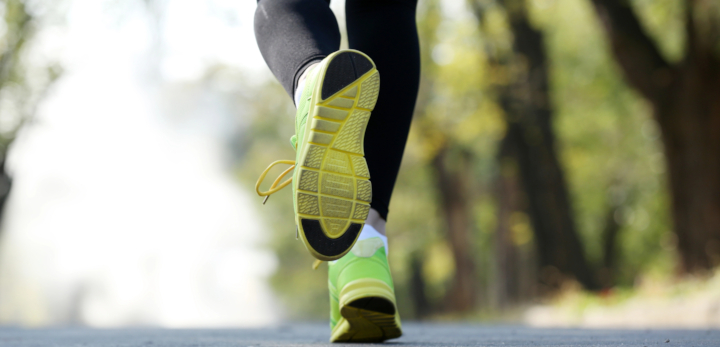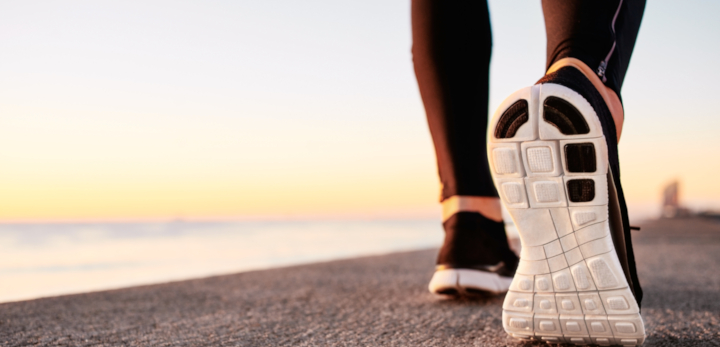Stability running shoes are made for runners who overpronate. Unlike neutral shoes, these models use firmer foams or a slightly raised midsole on the inner edge to keep the arch from collapsing and to help your foot track more efficiently. When the arch collapses too much, it can pull the tibia inward and eventually lead to knee aches or other alignment issues.
Not sure if you actually need stability running shoes? You’re not alone. In this guide, we’ll break down five clear signs to watch for, along with simple at-home tests that can help you figure out whether added support is the right match for your gait.
Table of Contents
- You Overpronate When You Run or Walk
- You’ve Had Repeated Injuries or Discomfort
- Your Arches Collapse Under Pressure
- You Notice Uneven Wear on Your Running Shoes
- You’ve Been Told You Need More Support

The 5 Signs to Watch for When It Comes to Overpronation
1. You Overpronate When You Run or Walk
Overpronation happens when your foot rolls inward more than it should during walking or running. A bit of that inward motion is completely normal because it’s your body’s built-in shock absorber. But when it goes too far, your alignment shifts out of balance, putting extra strain on your muscles and joints.
Common Signs of Overpronation:
- Your feet roll inward excessively with each step
- Your shoes show more wear on the inner edge, especially at the heel or forefoot
- You often feel pain in your heel, ankle, shin, or knee after running or walking
- Fatigue sets in sooner than expected because of excessive, unnecessary movement of the foot, which affects the entire leg
If these signs sound familiar, it might be time to evaluate how you run.

2. You’ve Had Repeated Injuries or Discomfort
Not all runners who overpronate end up injured. The fact is, studies show that over 40% don’t experience overuse injuries. But for those who do, the issues can be persistent and painful.
Common Overpronation-Related Injuries:
- Shin splints – aching or sharp pain along the front of the lower leg
- Runner’s knee – dull pain around the kneecap, especially after long runs
- Plantar fasciitis – stabbing heel pain, often worse in the morning
- Achilles tendinitis – tightness or pain in the back of the heel
- Bunions – bony bumps at the base of the big toe caused by excess pressure because runners who overpronate almost completely use the big toe at toe-off
Even without a full-blown injury, overpronation often causes general discomfort in the arches, ankles, knees, or hips, especially during long runs, after increasing mileage, or at the last mile when you are almost completely exhausted.
How Stability Shoes Can Help
Stability running shoes are designed to limit excessive inward motion. They use firmer foam, medial posts, or guidance systems to support the arch and align the foot properly. By doing so, they help reduce strain on your joints and soft tissues, improving comfort and lowering the risk of injury over time.
If you’re feeling recurring aches or dealing with nagging pain, it’s worth learning how to tell if you need stability running shoes; they could be the support system your stride is missing.

3. Your Arches Collapse Under Pressure
Overpronation often causes your arch to collapse under pressure, especially when your foot strikes the ground. Instead of maintaining its shape, the arch flattens out too much, leading to excess inward motion that throws off your alignment.
Low or Flexible Arches: A Red Flag
If you have low or very flexible arches, your foot may lack the structure to support itself during the impact phase of your stride. This can be a strong indicator that you may need a stability shoe, especially if you also experience pain or instability.
Try the Wet Foot Test
One easy way to check your arch type at home is the wet foot test:
- Wet the bottom of your foot.
- Step onto a dry surface like cardboard or concrete.
- Look at the imprint: A full footprint suggests a low arch or flat foot. A narrow curve on the inside of the foot suggests a normal arch. And a very thin or missing curve could mean a high arch.
If your print shows a full or nearly full imprint, your arches are likely low, and you may be overpronating.
Why Arch Support Matters
For overpronators, arch support is essential. It helps prevent the arch from collapsing, guiding your foot through a more stable, efficient stride. Stability shoes with built-in arch support reduce stress on your plantar fascia, Achilles tendon, and knee joints, helping you run more comfortably and safely.
Learning how to tell if you need stability running shoes starts with understanding how your arches behave under pressure. If they flatten too much, it’s a strong sign you need extra support.

4. You Notice Uneven Wear on Your Running Shoes
Your running shoes can reveal a lot about how your feet move, especially if you overpronate. Take a look at the outsoles (the bottoms of your shoes). Uneven wear patterns can act as a visual clue to your gait mechanics.
What to Look For:
- Excessive wear on the inner edge of the heel or forefoot is a classic sign of overpronation.
- You might also notice the midsole feels compressed or collapsed on the inner side.
- If your shoes tilt inward when placed on a flat surface, that’s another potential red flag.
These wear patterns suggest your foot is rolling inward too much with each step, putting extra pressure on one side of the shoe, and your joints.
When to Get a Gait Analysis
If you’re unsure what your wear patterns mean, or if you’ve had recurring discomfort, it’s a good idea to get a gait analysis. Many specialty running stores offer this for free. It involves walking or running on a treadmill while your movement is recorded and analyzed.
A gait analysis can confirm whether you overpronate and help you choose the right shoes, especially if you’re figuring out how to tell if you need stability running shoes. The right fit starts with knowing how your body moves.

5. You’ve Been Told You Need More Support
If you’ve been told you need more support, take it seriously. Stability running shoes aren’t just for people with obvious foot issues. They’re for anyone whose stride needs guidance to stay aligned and injury-free.
Trust the Experts
If a physical therapist, podiatrist, or running store specialist has recommended stability shoes, it’s likely based on real biomechanical concerns like arch collapse. Tools like gait analysis or pressure mapping can provide visual evidence of how your foot moves and where the pressure points are.
If those tests show your feet roll inward or your arches flatten too much, stability shoes can help correct that motion and reduce strain on your knees, ankles, and hips.
Expert Advice vs. Trial and Error
Expert guidance gives you a clear starting point, especially if you’ve had discomfort or injuries. But some runners still need a bit of trial and error to find the perfect shoe. Not every stability shoe feels the same; some are firmer, some are more cushioned, and some offer just mild guidance.
If you’re wondering how to tell if you need stability running shoes, expert input combined with how your body feels in the shoe is often the most reliable path forward. Trust the data, but don’t ignore your comfort.
Final Thoughts on How to Tell If You Need Stability Running Shoes
If you’re unsure whether stability running shoes are right for you, start by looking at the signs:
- Excessive inward foot roll (overpronation)
- Uneven wear on the inner edge of your running shoes
- Recurring pain in your arches, ankles, knees, or hips
- Low or collapsing arches under pressure
- Advice from experts or gait analysis results
These red flags often mean your stride could use more support.
Before you buy your next pair of running shoes, take time to assess your needs. Pay attention to how your feet move, how your shoes wear down, and how your body feels during and after runs.
And don’t settle for the first pair you try. Stability running shoes vary in cushioning, structure, and fit, so it’s worth testing a few to find the right balance of comfort and support. Your best run starts with the right foundation.
(This content was created with the help of AI.)
You may also like:
